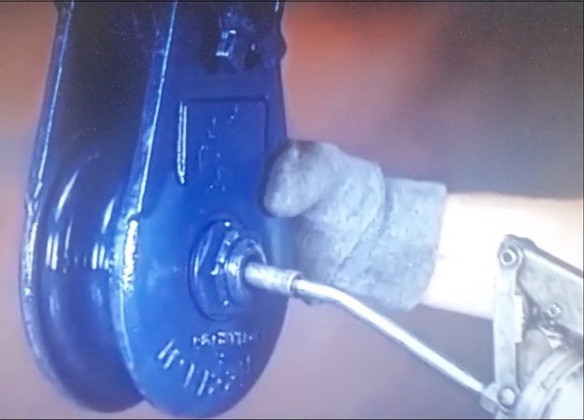Snatch-Block Maintenance
Apr 20th 2021
A two-day safety course practiced use and application of chain and snatch-blocks. In this class, one operator provided a snatch-block that was rusted and bent, which was a perfect example of non-maintenance.
The operator blamed the company’s shop for the block’s unacceptable condition. Who has responsibility assuring that a snatch-block works when needed?
Recovery and pivot winching are regular activities. A snatch-block is perhaps the most used equipment item on carriers and wreckers. Because they’re a rolling pulley with moving parts, they NEED to be greased.
This is especially true when snatch-blocks are stored atop carrier side-boxes where they’re constantly exposed to dirt, rain and moisture. A small, inexpensive tool-box helps prevent against adverse conditions.
For wreckers, snatch-blocks aren’t exposed to moisture (as much) because they’re typically stored inside a wrecker’s tool boxes. The best conditions allow the snatch-block to be hung from an accessible bracket inside the box. Hanging snatch-blocks on the inside of a tool-box’s door causes door hinges to sag (over time) because of the block’s weight.
Because snatch-blocks use (for recovery situations) is an important training module, it’s important that tow operators, not the shop, routinely inspect the snatch-block’s components to ensure it’s ready for use in a moment’s notice.
Maintaining a snatch-block is an operator’s responsibility to ensure the block has grease to its components, including safety-clips and swivel-hooks that work. It should not happen that an operator has to “beat the snot out of its twist knob” because it’s rusted shut.
A rolling, functioning “wheel” is necessary in allowing the block to roll while keeping winch-cable in the block’s center-groove. If the wheel seizes, cable may not remain centered only to ride the wheel’s edge and lay against the block’s face plate.
A visual inspection includes looking for damaged side plates that occur when the plate wasn’t fully tightened. Accordingly, when tightening the block’s twist-knob, it should be tight, yet backed-off slightly to allow for re-opening when use is completed.
If a block’s side-plate isn’t closed correctly, a quarter-inch gap allows winch’s cable to become unknowingly “sucked” into its side-plate. A bent side-plate becomes a potential, “cut point,” where violent separation and whip-lash is danger close.
Greasing a snatch-block’s components takes only five-minutes to maintain optimum capability. Minimally, a finger-tip full of boom or wheel-lift grease (on the knob’s threads) helps to easily screw and unscrew the snatch-block’s tightening knob and faceplate. A smidge of grease, suitably applied, helps the hook’s swivel-head swivel and turn freely.
When rigging snatch-block’s for winching applications, a functioning safety-clip is required when attached to D-Rings or other recovery locations.
Company mechanics have enough to do, so tow operators can help ensure their snatch-block is fully operable by inspecting it themselves. While it’s easy for some operators to claim, “This isn’t in my job description,” inspection is a routine task that relates to their work and equipment. Snatch-block maintenance is simply one specialized item that should be listed on the company’s pre-trip or daily inspection form.
Article Courtesy of: http://towindustryweek.com/



